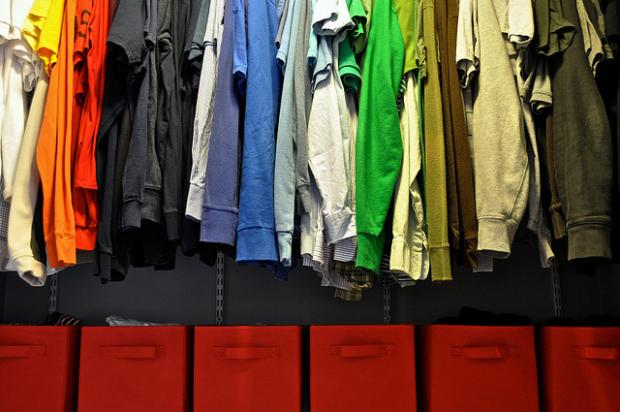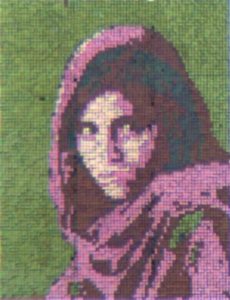
Researchers Develop First-Ever Flexible, Skin-Like Display That Could Eliminate Having To Buy Multiple Shirts
Picture this: A soldier needs to change his camouflage uniform from green to tan in a flash or you want to change the color of your clothes without having to head back home and change your entire outfit.
Seems impossible? Not anymore thanks to a team of researchers from a University of Central Florida lab led by Professor Debashis Chanda of UCF’s NanoScience Technology Center and the College of Optics and Photonics (CREOL).
The team has actually created a technique that paved the way for the world’s first full-color, flexible thin-film reflective display.
Traditional displays found on cellphones require a light source to function, as well as filters and a glass plates, but animals like chameleons, octopuses and squids are born with thin, flexible, color-changing displays that don’t need a light source – their own skin.

“All manmade displays – LCD, LED, CRT – are rigid, brittle and bulky. But you look at an octopus, they can create color on the skin itself covering a complex body contour, and it’s stretchable and flexible,” said Chanda. “That was the motivation: Can we take some inspiration from biology and create a skin-like display?”
Chanda’s article in the June issue of the journal Nature Communications describes the team’s method for changing the color on an ultrathin nanostructured surface by applying voltage. The new method doesn’t need its own light source; instead it reflects the ambient light around it.
How it works
A thin liquid crystal layer is sandwiched over a metallic nanostructure shaped like a microscopic egg carton that absorbs some light wavelengths and reflects others. The colors reflected can be controlled by the voltage applied to the liquid crystal layer. The interaction between liquid crystal molecules and plasmon waves on the nanostructured metallic surface played the key role in generating the polarization-independent, full-color tunable display.
Previous researchers could produce only a limited color palette for displays and they were often much thicker than Chandra’s. The new display is only about few microns thick, compared to a 100-micron-thick human hair.
An ultrathin display like this offers many possibilities for flexible materials like plastics and synthetic fabrics.
The breakthrough could also improve upon existing electronics like televisions, computers and mobile devices that have thin displays and possibly and even bigger impact on entirely new categories of displays that have never been thought of.
“Your camouflage, your clothing, your fashion items – all of that could change,” Chanda said. “Why would I need 50 shirts in my closet if I could change the color and pattern?”
Researchers used a simple and inexpensive nano-imprinting technique that can produce the reflective nanostructured surface over a large area.
“This is a cheap way of making displays on a flexible substrate with full-color generation,” Chanda said. “That’s a unique combination.”
